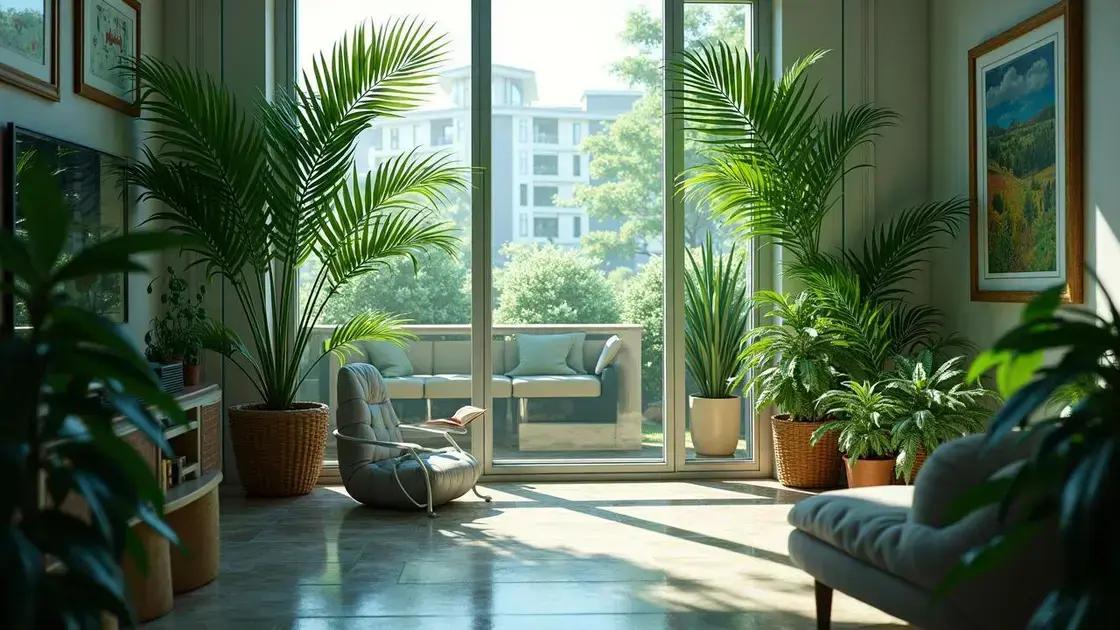How to Care for Indoor Palm Plant: 5 Essential Tips for Thriving Growth
How to care for indoor palm plant is a question many aspiring plant lovers ponder when bringing a touch of nature into their homes. The lush greenery of palm plants can be inviting and refreshing, but they also require specific attention to thrive. In this guide, we’ll explore what you need to know for your indoor palms to flourish and look stunning in your space.
Table of Contents
ToggleEssential watering tips for indoor palm plants
How to care for indoor palm plants starts with understanding the essential watering needs of these tropical beauties. Proper hydration is key to keeping your indoor palm healthy and thriving. This guide outlines effective watering strategies to ensure your palm plants receive the right amount of moisture throughout the year.
Understanding the watering needs of indoor palms
Indoor palms thrive in well-draining soil that retains some moisture while preventing root rot. Here are pointers to help you gauge their watering needs:
- Check the topsoil: Before watering, stick your finger about an inch into the soil. If it’s dry, it’s time to water.
- Observe the leaves: Yellowing leaves may indicate overwatering, while browning tips suggest underwatering.
- Consider the season: Palms typically require more water during their active growing season (spring and summer) and less during dormancy (fall and winter).
Best watering practices
Follow these best practices when watering your indoor palm:
- Use room temperature water to avoid shocking the roots.
- Water deeply until excess water drains from the bottom of the pot.
- Allow the soil to dry slightly between waterings.
- Avoid letting your palm sit in standing water, as this could lead to root rot.
Common pitfalls in watering
Many indoor plant enthusiasts struggle with finding the right balance. Here are common mistakes to avoid:
- Overwatering: This is the most frequent cause of palm stress. Ensure pots have drainage holes.
- Ignoring humidity levels: Palms appreciate humidity. Regular misting or using a humidity tray can help.
- Not adjusting for environmental changes: Moving your palm to a new location may change its watering needs.
For more insights on proper indoor palm care, consider exploring indoor gardening techniques from the experts.
| Watering Frequency | Spring/Summer | Fall/Winter |
|---|---|---|
| Every 7-10 days | High | Low |
Optimal sunlight requirements for indoor palms

Optimal sunlight requirements for indoor palms are essential for their healthy growth and vibrant appearance. Understanding how much light these beautiful plants need can make a significant difference in their overall health and longevity.
Light conditions suitable for indoor palms
Indoor palms thrive in various lighting conditions depending on the specific variety. Here’s a summary of what you should consider:
- Indirect sunlight is best for most palm varieties.
- Avoid direct sunlight exposure, as it can scorch the leaves.
- Some palms, like the Areca or Parlor palm, do well in lower light conditions.
- Others, such as the Kentia palm, prefer brighter spots but still need shade from harsh afternoon sun.
How to assess sunlight needs
- Observe the light levels in your room throughout the day.
- Use a light meter to measure lux levels if needed.
- Position your palm away from drafts and heat sources.
- Rotate your plant regularly to ensure balanced growth on all sides.
Signs of improper light exposure
Recognizing the signs of too much or too little light is crucial:
- Yellowing leaves may indicate too much direct sunlight.
- Browning leaf tips can result from inadequate light exposure.
- Slow growth or leggy appearance suggests the need for increased light.
For further information on maintaining healthy palms, check out exploring indoor gardening techniques that delve deeper into care routines.
| Palm variety | Light preference | Notes |
|---|---|---|
| Areca Palm | Indirect light | Thrives in medium light; avoid direct sun. |
| Kentia Palm | Bright, indirect light | Notably adaptable; needs protection from direct rays. |
| Parlor Palm | Low light to bright indirect light | Very forgiving; great for low-light areas. |
Common pests and how to manage indoor palm care
Common pests and how to manage indoor palm care are vital topics for maintaining the health of your prized plants. Recognizing and dealing with pests early can prevent significant damage and ensure your indoor palms thrive.
Identifying common pests in indoor palms
Indoor palm plants can attract various pests, and knowing what to look for is essential for effective management. Some of the most common pests include:
- Spider mites: These tiny pests leave webbing on leaves and cause yellowing.
- Scale insects: They appear as small bumps on stems and leaves, sucking sap from the plant.
- Mealybugs: These pests look like small white cottony masses on the stems and leaves.
- Fungus gnats: The larvae of these flies thrive in moist soil and can harm root growth.
Effective management strategies
Here are practical steps for managing pests on your indoor palms:
- Regularly inspect your plants for signs of infestations.
- Use insecticidal soap to spray affected areas, following package instructions.
- Introduce beneficial insects, such as ladybugs, to help control pest populations.
- Avoid overwatering to reduce the risk of fungus gnats.
Preventive measures to keep palms pest-free
Taking preventive steps can minimize the risk of pest infestations:
- Ensure proper air circulation around your plants.
- Quarantine new plants for a couple of weeks before introducing them to your collection.
- Maintain proper humidity levels, as many pests thrive in overly dry conditions.
For more information on maintaining beautiful palms and their environment, consider exploring indoor gardening techniques to enhance your care skills.
| Pest Type | Symptoms | Control Method |
|---|---|---|
| Spider mites | Webbing, yellowing leaves | Insecticidal soap |
| Scale insects | Small bumps, leaf yellowing | Neem oil treatment |
| Mealybugs | White cottony spots | Alcohol wipes |
| Fungus gnats | Fly in soil, root damage | Sticky traps, dry out soil |
In conclusion
Caring for indoor palm plants is a rewarding experience that greatly enhances your living space. By understanding essential watering practices, optimal sunlight requirements, and managing common pests, you can ensure that your palm remains healthy and vibrant. Remember, a little effort goes a long way in maintaining these beautiful plants. For further insights and tips on enhancing your indoor garden, explore the wealth of resources available to ensure your palms and other plants thrive.

